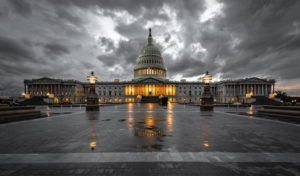
“With great power comes great responsibility” to ensure workplace equality.
E.B. White once observed, “It is not often that someone comes along who is a true friend and a good writer.” After reading The Workplace Constitution From the New Deal to the New Right, my reaction is similar: it’s not often that someone comes along who is an outstanding historian, a first rate legal scholar, a good writer, and good friend. My friend and colleague Sophia Lee’s book exhibits a full array of the virtues of the historian, the legal scholar, and the writer.
The Workplace Constitution begins with a resonant central legal question: “After the New Deal, what do Constitutional protections of equality and liberty imply for the relation between workers, employers, and unions?”
The Workplace Constitution traces that question through the triple helix of advocacy efforts by the National Association for the Advancement of Colored People (NAACP) and its allies, by the labor movement and its supporters, and by the opponents of organized labor and their counsel.
The Workplace Constitution draws upon a prodigious array of archival and secondary research. Professor Lee has explored, by my count, twenty-four different archives, along with an astonishing array of online, published, and microfilm sources. She has provided two pages of densely documented footnotes for every five pages of text. And what a text it is. The Workplace Constitution is packed with acute and nuanced accounts of legal moves and counter-moves, arresting portraits of crucial actors, telling details, and elegant writing.
Some of Professor Lee’s book deals with a landscape in which I lived, and all of it touches upon material about which I have taught in my constitutional law class for three decades. And yet, in every chapter I came away with new insights.
The drama Professor Lee recounts begins with the deeply inscribed racial character of many early-twentieth century labor unions– which often functioned as identity groups, as fraternal lodges, and occasionally as extended families. As the New Deal embedded unions’ collective bargaining rights in national policy and national administration, Lee notes, the American Civil Liberties Union (ACLU) and the NAACP confronted a Congress in which Southern senators and congressmen held strategic authority. These advocates of racial equality failed in their efforts to include anti-discrimination obligations in the National Labor Relations Act (NLRA) (1935) and Railway Labor Act (RLA) (1934), or to secure such obligations by amendment.
With a national labor infrastructure in place, and legislative options blocked, Professor Lee recounts the turn of advocates for black workers toward litigation that sought to import constitutional obligations into the workplace. Advocates relied on an account of state action that might be called the “Spiderman Theory” of constitutional coverage. You will recall that in Spiderman the movie, Uncle Ben informs Peter Parker that “with great power comes great responsibility.” Advocates for black workers argued that the entities newly empowered by governmental support and oversight had a concomitant responsibility to abide by constitutional limits on discrimination that bound government entities.
It was not an argument that met immediate success. But a decade after the enactment of the RLA, on December 18, 1944, in Steele v. Louisville and Nashville Railroad Co., the Supreme Court concluded that the power conferred by the RLA on unions functioning as exclusive bargaining representatives was a “power not unlike that of a legislature” and that if the statute permitted the power be used on the basis of “hostile discrimination,” constitutional questions would arise. The Court therefore concluded that a representative labor union was required by force of federal statute and policy to represent both members and non-members “fairly,” and that because “discriminations based on race alone are obviously irrelevant and invidious,” the RLA did not permit bargaining representatives to engage in such discrimination.
Within the context of Professor Lee’s story, this is obviously an aggressive stance for the Court to take. Congress had rejected efforts to adopt explicit guarantees against discrimination in the RLA and the “state action” limitation had been firmly embedded in federal law in the 60 years since the Civil Rights Cases (1883).
The Court flirted with (and Justice Murphy would have accepted) the Spiderman Theory of state action. In the post New Deal world, this would have carried enormous implications. As more and more economic enterprises and opportunities were founded on power and opportunity granted by explicit regulatory interventions – and the presumptive legitimacy of common law economic rights became a matter for explicit debate – the Spiderman Theory opened a channel that had the potential to carry norms of racial equality into a broad array of new fields, both on the theory that regulators have a duty to ensure that they do not add their imprimatur to actions they could not take directly, and on the theory that the regulated who are empowered by the government are obliged to take up its constitutionally mandatory obligations.
What is equally striking to me, looking over the wall from the silo of a teacher of constitutional law, is that the Steele Court deployed a constitutionally inflected interpretation of federal statutes to hold racial discrimination illegal and “obviously invidious” in the absence of an equal protection clause binding the federal government. To be sure, the federal government is barred from depriving persons of “liberty or property without due process of law.” But the slaveholders who drafted and ratified the Fifth Amendment provided no explicit or implicit protection against racial discrimination. And – a fact I hadn’t previously focused on that emphasizes the starkness of the assertion of constitutional principle – the same day the Court handed down Steele, it also decided Korematsu v. United States and ex parte Endo.
Korematsu articulated for the first time the proposition that under the demands of due process “legal restrictions which curtail the civil rights of a single racial group are immediately suspect,” but accepted a military judgment of the “pressing . . . necessity” of restrictions on residence by Japanese citizens at the outset of the war. Endo announced that “[l]oyalty is a matter of the heart and mind, not of race, creed, or color,” and it invalidated continued detention of Japanese internees in relocation camps on the somewhat aggressive ground that Congress could not be assumed to authorize “discriminatory action . . . taken against these people wholly on account of their ancestry.” That these cases were handed down with Steele, which adopted an extra-textual and quasi-constitutional principle that racial discrimination is “obviously invidious,” implies to me that the workplace constitutional arguments were an integral part of the developing structure of the judicial assault on American apartheid.
To be sure, Justice Murphy declined to join the Steele majority opinion because it did not go far enough. He objected that “[r]acism is far too virulent today to permit the slightest refusal, in light of a constitution that abhors it, to expose and condemn it,” just as he dissented from Korematsu on the ground that the Japanese internment went “over ‘the very brink of constitutional power,’ and . . . into the ugly abyss of racism.” But a decade later when the Court in Bolling v. Sharpe held that the federal government, like the states, was constitutionally barred from operating segregated schools, the cases upon which it relied for the proposition that the constitution forbids “discrimination by the general government . . . against any citizen because of his race” were Korematsu and Steele.
Brown v. Board of Education and Bolling, of course, began a decade and a half of contention in the courts, streets, and legislative halls. As the Second Reconstruction unfolded, Professor Lee’s narrative casts important light on the ways in which the efforts to desegregate public schools and public spaces proceeded in tandem with the struggle by civil rights advocates to bring racial equality to workplaces. Along with the account of civil rights advocates’ efforts to bring the “workplace constitution” of racial equality to bear against exclusionary unions and discriminatory employers, there is a wonderfully portentous cameo of Richard Nixon – who would later go on to support the Philadelphia Plan but impel his Justice Department to withdraw from the effort to desegregate schools – and John Minor Wisdom – who would later become a civil rights icon on the Fifth Circuit – working together with the President’s Committee on Government Contracts in an ultimately unsuccessful effort to use federal financial leverage to open jobs for blacks in Gulf Coast refineries.
The Workplace Constitution brings to center stage a series of initiatives by civil rights advocates inside and outside of the Kennedy and Johnson administrations to deploy the Spiderman Theory in order to leverage the regulatory authority of the post-New Deal administrative state to bring racial equality to workplaces. Professor Lee recounts the NLRB’s adoption of the theory at the instance of the NAACP and of advocates across the federal bureaucracy to impose racial equality on unions. She tells of the Federal Communications Commission’s adoption of the theory at the instance of the Equal Employment Opportunity Commission and a coalition of civil rights advocates, imposing fair employment obligations on holders of broadcast licenses. And she spins the tale of the Federal Power Commission’s (FPC) ultimately successful resistance to imposing equal employment obligations on the energy industry that had resisted the blandishments of Nixon and Wisdom in the 1950s.
The Workplace Constitution highlights for me previously unacknowledged stakes in the state action cases of the early 1970s which I have been teaching for three and a half decades. In distancing itself from the Spiderman Theory of state action in Moose Lodge v. Irvis (1972), Lloyd Corp. v. Tanner (1972), CBS v. Democratic National Committee (1973), and Jackson v. Metropolitan Edison (1974), the Supreme Court not only tied its own hands, but laid the basis for constraining the authority of the civil servants of the federal administrative state to channel national policy. As Professor Lee recounts, this retrenchment overlapped with the decisions in Washington v. Davis (1976), which divorced Civil Rights Act Title VII disparate impact obligations from the constitution, and NAACP v. FPC (1976), which rejected the claim that regulation of power “to promote the general welfare” empowered the agency to promote equal employment. As Professor Lee reads the landscape, these developments were part of a consensus between liberal and conservative Justices to “set fences among regulatory statutes and between those statutes and the Constitution . . . [The] liberal justices accepted the fences to preserve the New Deal administrative state, conservatives did so to restrain it.”
On this point, my constitutional law instincts suggest several additional lines of interpretation. The Spiderman Theory came to center stage at a time when national legislative routes to racial inclusion had been blocked for three generations by the Solid South. The Court undertook to disestablish American apartheid through the invocation of its constitutional authority, extended toward the private sector by the Spiderman Theory. By the late 1970s, however, three developments altered the landscape.
First, Congress had entered the quest for equality as a full partner – and had empowered both private litigants and federal litigators to invoke specific statutory mandates that were almost as penetrating as the Spiderman Theory. Title VII had been expanded to reach virtually every employer and to allow EEOC pattern and practice claims, and it had been interpreted by a unanimous Court in Griggs v. Duke Power Co. (1971) to reach disparate impact as well as disparate treatment. The Fair Housing Act case law similarly incorporated both disparate treatment and disparate impact analysis with respect to land use, and in Lau v. Nichols (1974) the Court approved the imposition of disparate impact obligations along with disparate treatment prohibitions on all recipients of federal funds. In wide swaths of American life, the Spiderman Theory was no longer necessary to ground federal remedies for racial exclusion.
Second, as first generation apartheid receded and was displaced by subtler forms of racial exclusion, the normative consensus of Brown began to fray. Disparate impact arguments ran up against norms of color-blind individualism, and began to raise problems of calibrating the nature of countervailing costs. A decision by the Court to withdraw from the Spiderman Theory allowed these challenging tradeoffs to take place in modular fashion, informed both by administrative expertise and legislative responsiveness. The rule of Title VII needed not to be applied to every decision shadowed by government regulation, and it could itself be adjusted in the legislature without endangering other rules.
Third, state action retrenchment of the 1970s overlapped with the apotheosis of the de facto/de jure distinction in school desegregation. A Court unwilling or unable to address the embedded racial isolation in northern school systems adopted a line of analysis that distinguished between segregation that arose out of the decision of private actors and segregation that arose out of advertent government decisions. But this distinction, between government permission and government mandate was exactly the line that was effaced by the Spiderman Theory. And it was the Spiderman Theory that gave way.
But, the Spiderman Theory retains its attractions, and as in the movies there is always room for a sequel.
In reading the oral arguments in Obergefell v. Hodges, the Court’s marriage equality decision handed down in June of this year, I came across echoes of the Spiderman Theory from opposite sides of the aisle:
Solicitor General Verilli adopted the proposition that permission is approval:
If this Court concludes that this issue should be left to the political process, what the Court will be saying is that the demeaning, second-class status that gay and lesbian couples now inhabit in States that do not provide for marriage is consistent with the equal protection of the laws. That is not a wait-and-see. That is a validation.
Justice Scalia declaimed, in terms reminiscent both of the advocates for the NAACP and of Uncle Ben:
Once [marriage equality is] made a matter of constitutional law, . . . is it conceivable that a minister who is authorized by the State to conduct marriage can decline to marry two men? . . . To the extent he’s conducting a civil marriage, he’s an instrument of the State. I don’t see how you could possibly allow that minister to say, I will only marry a man and a woman . . . That minister refuses to marry two men, and therefore, cannot be given the State power to make a real State marriage. I don’t see any – any answer to that. I really don’t.
Neither General Verilli nor Justice Scalia, of course, had read Sophia Lee’s book. They, like other readers, could learn much.
This essay is part of a six-part series, The Struggle Over the Constitution in the Workplace.




